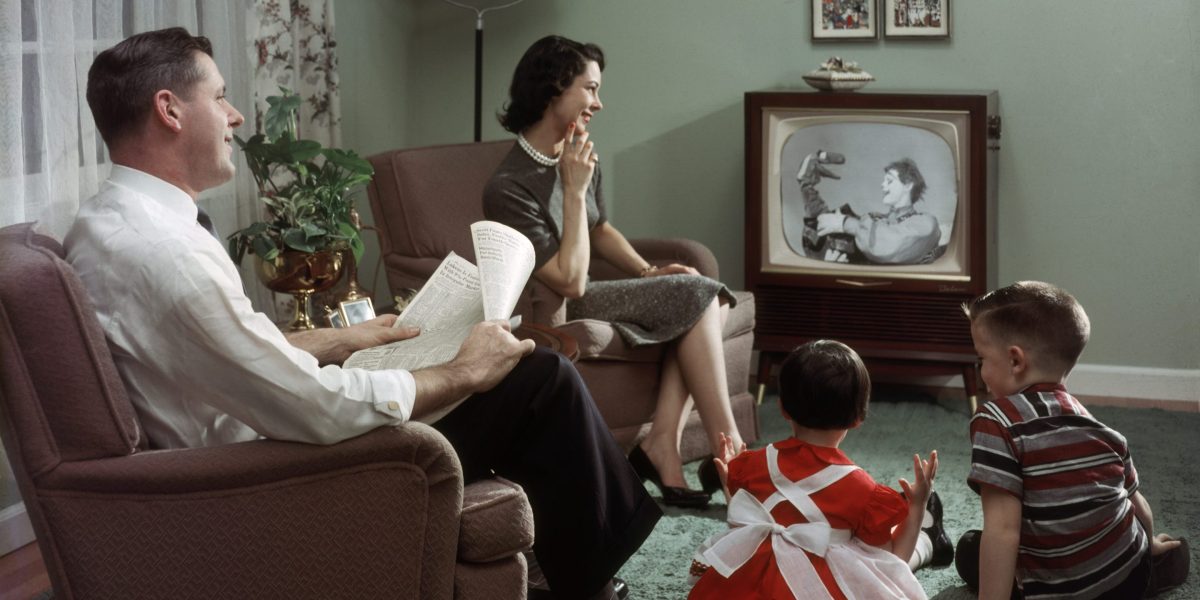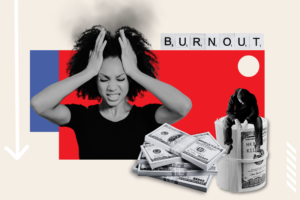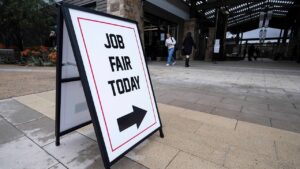With persistent inflation, war-induced energy price shocks and rising geopolitical tensions gripping the global economy over the past four years, some of Wall Street’s most respected names have repeatedly warned that the U.S. could go towards a repeat of the stagflation of the 1970s.
Even JPMorgan Chase CEO Jamie Dimon has suggested on multiple occasions that stagflation could return, with his latest warning coming at the AllianceBernstein Strategic Decisions conference last week. Dimon didn’t quite predict a repeat of the toxic combination of high inflation and anemic economic growth last seen in the US in the 1970s at the conference, but he said he believes the odds of a stagflation nightmare scenario are “much higher “. than most experts estimate.
“I look at the amount of fiscal and monetary stimulus that’s happened over the last five years — it’s been so extraordinary, how can you tell me it’s not going to lead to stagflation?”
“It may not be,” he said. “But I, for one, am quite prepared for it.”
Now, though, Henry Allen, a macro strategist at Deutsche Bank, is pushing back on the 1970s narrative. “In recent weeks, we’ve started to see increasing comparisons between the early 1950s and today,” he explained in a note. on Tuesdays for customers.
Allen noted that both today’s economy and that of the 1950s featured a strong job market, persistently rising stock prices, increased geopolitical tensions, and a short-lived increase in inflation.
“Time will tell if the early 1950s provide a good parallel, but if these similarities remain, there may be plenty of room for optimism,” the strategist said. “The good news is that the early 1950s was a period of good economic growth and productivity.”
Four similarities to the economic boom of the postwar 1950s
1. A surprisingly familiar wave of inflation
When most Americans think of the 1950s, they don’t think of inflation. The post-war era is often romanticized as a period of economic and social stability; it has even been labeled by some the “Golden Age of Capitalism”. In many ways, this “golden age” economic narrative is true, but like the 2020s, the 1950s were also a decade of challenges—and they began with a wave of Consumer Price Index (CPI) inflation.
“US inflation rose from late 1950 to 1951. At its peak in February 1951, CPI inflation peaked at 9.4%,” Allen noted. “This is a very similar peak to today, when CPI inflation rose to 9.1% in June 2022.”
After this initial rise in consumer prices in 1950 and 1951, caused in part by the start of the Korean War, inflation declined throughout the rest of the 1950s, however. It’s a pattern that is “a closer parallel” to the 2020s than the 1970s, according to Allen. “So far, we haven’t seen the kind of persistence that occurred in the 1970s, when CPI inflation remained above 4% for nearly a decade,” he said.
Instead, in the 2020s, after reaching its peak of 9.1% in June 2022, inflation has fallen sharply, reaching 3.4% in April.
2. Historically low unemployment
The labor market was the powerhouse of the American economy for most of the 1950s. The unemployment rate averaged about 4.5% during the decade and reached a low of just 2.5% in 1953. Now, even with stubborn inflation, growth interest rates and geopolitical tensions weighing on consumers and businesses, the economy of the 2020s is heading down a similar path, entering a more than 70-year labor market record.
Allen noted that if Friday’s jobs report shows the jobless rate remains below 4% in May, it would mark the longest stretch of unemployment below 4% since the early 1950s, when the economy saw a period of 35 -monthly unemployment below 4%. .
3. Growing markets
The meteoric rise of the stock market since 2020 is another undeniable parallel between 1950 and 2020. Between January 1950 and the end of 1954, the S&P 500 more than doubled, rising 100 to 225, despite a brief recession caused in part by the drop in military spending after the end of the Korean War.
Similarly, between the start of 2020 and today, the S&P 500 is up more than 62%, even after a brief downturn caused by the pandemic in March 2020 and numerous wars abroad. And while stock market performance in the 2020s hasn’t been as impressive as it was in the early 1950s, it definitely doesn’t look like the 1970s. Between January 1970 and the end of 1974, the S&P 500 sank 45%.
4. Geopolitical risk
Geopolitical tensions were a major feature of the 1950s, as they are today, as the staunchly capitalist US sought the “global containment” of communism after World War II, while the Soviet Union sought to spread its own ideology. This war of economic and political systems manifested itself in ongoing tensions between the world’s superpowers and a constant threat of nuclear war, and even helped spark the Korean War.
It was a time of “increased geopolitical risk,” Allen noted, explaining that “this was in the early stages of the Cold War, when there were great tensions between the U.S. and the Soviet Union, and those tensions were visible in some regions. “
Similarly, today, the global economy is facing a constant threat from the ongoing conflicts in Ukraine and Israel. These battles have routinely caused problems for businesses and consumers in recent years, fueling a global spike in oil and natural gas prices in 2022 and fueling a recent Red Sea shipping crisis.
Two main differences between 1950 and 2020
Despite the many similarities between the 1950s and 2020, Allen noted that there are also some key differences, and said “we shouldn’t overstate the comparison.”
First, the strategist noted that the U.S. government debt is increasing now, while it was going in the other direction in the 1950s. American falling sharply. This is very different from today’s environment, where the ratio of public debt to GDP has been on an upward trend for the past few decades,” he wrote.
According to him, after rising to a peak of 119% in 1946 after World War II, the US debt-to-GDP ratio fell dramatically during the 1950s, from 85% at the beginning of the decade to just 53% in 1960.
On the other hand, during the fourth quarter of 2023, the US debt-to-GDP ratio reached 121%, just above its post-World War II high. And the Congressional Budget Office expects that figure to rise to 166% by 2054.
The second major difference between 1950 and 2020 lies in birth rates. Allen noted that birth rates rose in the 1950s, leading to the nickname “baby boomers” of the generation born in that postwar era.
“This was a very favorable trend economically, as it meant that there was a growing pool of young workers entering the workforce over the following decades,” he wrote. “In contrast today, birth rates have been declining and the American population is aging.”
In 1955, the U.S. fertility rate—the number of children a woman would have if she lived to the end of her childbearing years—was 3.42. Today, that number has halved to just 1.79.
Some experts also pointed to stubborn inflation and slowing GDP growth as evidence that stagflation may be on its way early this year. CPI inflation has been stuck in a range between 3% and 3.5% for almost a year now, and GDP growth slowed from 3.4% in the fourth quarter of 2023 to just 1.6% in the first quarter of this year .
“I’m starting to smell stagflation, dare I say it… I know it’s a dirty word in a lot of circles,” Steve Sosnick, chief strategist at Interactive Brokers, told Bloomberg when discussing the numbers in late April.
However, Bank of America economists pushed back against the stagflation narrative in a May 16 note to clients, supporting Deutsche Bank’s Allen’s view. They argued that the economy is not likely to slow down soon, despite more persistent inflation, because of the strength of the American consumer.
“After the lack of GDP growth in the first quarter and continuous surprises for the increase in inflation, the narrative of “stagflation” has reappeared. We retreat,” wrote economist Aditya Bhava, noting that there is evidence of “robust” consumer demand in the economy, particularly in the services sector, which should prevent economic stagnation.
The key to avoiding 1970s-style stagflation is a productivity boom
For Allen, the key to avoiding 1970s-style stagflation is improving labor market productivity – and he believes the economy has the potential to do that. U.S. labor market productivity has enjoyed a renaissance over the past year, rising 2.7% after a nearly two-decade period of pain where annual productivity growth averaged just 1.5%.
“Indeed, there’s reason to believe it could continue,” Allen said. “Low unemployment is often an incentive to increase productivity because firms do not have the ability to hire from a large pool of unemployed workers. As such, it encourages them to invest more in new technologies and help their existing staff become more productive.”
The Deutsche Bank strategist pointed to emerging technologies, including AI, as a potential catalyst for U.S. productivity growth as well, arguing that “this suggests there may be an upside risk to economic growth over the coming years “.
Increased productivity can help fight inflation while also reducing unit labor costs. “If that happens, then it’s more likely that we’ll avoid a period like the 1970s, when inflation was persistent,” Allen said.
Overall, the economy — and the stock market — should perform well if we see a repeat of the 1950s rather than the 1970s, according to Allen. But he also had a warning for investors: No era is exactly the same.
“Demographic trends are much less favorable, while the US national debt is on an upward trajectory. So both of these differences could present significant headwinds to growth over the coming years that were not experienced in the early 1950s,” he wrote.
#JPMorgans #Jamie #Dimon #bracing #stagflation #economy #headed #1950sstyle #boom
Image Source : fortune.com



